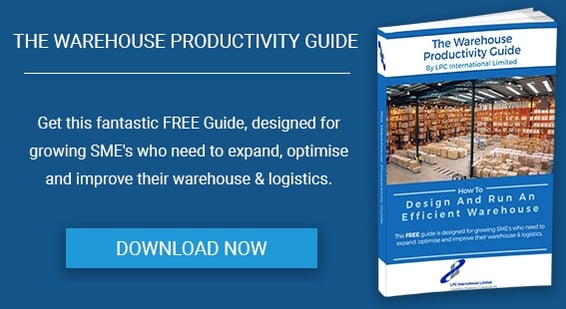Introduction
If you’re reading this the chances are that your business has survived the Credit Crunch followed closely by the Recession and you are now facing up to the reality of a difficult economic situation for some time to come.......
LPC International has developed techniques to enable logistics businesses to survive downturns in the economy and help them emerge stronger and fitter when the upturn arrives. Though the current economic situation is severe, recovery will come and those that have adapted their business strategy will be best placed to take advantage when the economy recovers.
The logistics sector has been, and will continue to be, hard-hit as consumer demand falls and fuel prices and taxation increase.
The economic downturn will create challenges in an industry which is very competitive, provides high levels of customer service and works to tight profit margins. Downturns inevitably affect those margins and customers, who themselves suffer similar economic pressures, look to service providers to sometimes absorb more than a fair share of the costs to mitigate their own financial position.
What action can be taken to address continuing economic pressures? Unless your company is confident enough to invest for the longer term then understanding and planning for short term circumstances is the first course of action. Essentially this means driving costs out of the business in order to become “leaner and meaner” whilst maintaining revenues and a healthy customer base.
LPC International recommends that three key areas of the business need to be addressed: Inventory and Stockholding, Warehousing Efficiency, and Network Planning and Transport.
Opportunities to streamline each of these during difficult economic times are outlined below. While not all businesses can implement all measures, it is well worth exploring all opportunities to achieve cost reductions, improve the “bottom line” on the balance sheet and operational efficiencies.
Inventory And Stockholding
Inventory reduction has several benefits, including:
- reducing the direct costs of inventory ownership
- lower warehousing costs
The obvious starting point is to dispose of obsolete stock which is usually easy to recognise – not least because of the amount of dust on it! The refusal to dispose of it is often driven by the unwillingness of accountants to “write-off” stock, without any apparent recognition of the warehousing costs incurred in continuing to store it. A simple way to identify such items is to produce “exception” stock reports which identify those items that haven’t been in demand for a significant period of time. By reviewing the reasons for the lack of movement it is possible to identify the SKU’s that can be discarded. Even if there is limited movement during the review period it is possible that the SKU is obsolescent and its stock levels can be reduced.
It is important too, to review purchase order quantities and order frequency. Though purchasing large quantities of a SKU may save on purchase costs, the potential costs of obsolescence (particularly of products which have relatively short life cycles) and warehousing must be considered. Placing smaller but more frequent purchase orders is prudent during periods of recession, particularly as prices can be more competitive, and stock more readily available than when trading is good.
Action should also be taken to reduce the range of stock held products. Rather than hold stock of all items, establish whether it is possible to buy less popular items from your suppliers directly against customer orders, and then cross-dock the order to customers when the goods arrive. While this may cause increased lead times, customers are often prepared to accept longer delivery timescales provided promises are reliable.
If there are multiple stockholding points then the centralisation of stock can assist cost reduction. By centralising all stock of a SKU at a single stockholding point it is possible to guarantee a level of availability that is greater than can be achieved if the same amount of stock is distributed amongst multiple stockholding points. By way of example, if you hold stock at one location instead of four, the amount of safety stock required to support a given service level will halve, a saving well worth having. This is Maister’s Law that states that the amount of safety stock (which is not the same as total stock) required to support demand varies according to the inverse square root of the number of stockholding points.
Warehousing Efficiency
Centralisation of stock also has other advantages, notably in terms of warehousing costs. The cost per unit of throughput from a single large warehouse can be significantly less than the cost per unit of throughput from one of a network of several smaller warehouses with the same combined capacity as the larger warehouse. The reasons for this are from the administrative and operational benefits of combining and rationalising: order processing, inventory control, security and managerial resources. Similarly stock centralisation may create an opportunity to introduce more advanced storage and materials handling systems which would not be economically viable in small warehouses.
It may appear irrational, during difficult economic times, to invest in more efficient materials handling and storage equipment, however it is a fact that around 40 – 45% of the total cost per unit of throughput in a typical warehouse is “space” or property related, some 35 – 40% related to “direct labour”, and 15 – 25% related to the depreciation, running, and maintenance cost of storage and handling equipment.
Investment in more appropriate types of storage and handling equipment can improve productivity levels. This might be where customer orders are picked in small “unit” quantities rather than as full pallets, or where there is opportunity to “sweat the property asset” through the use of high density storage equipment to make better use of available height, or to reduce aisle widths. A financial review of alternative storage and handling equipment can help identify solutions which will deliver on-going cost savings.
The centralisation of warehousing operations, and introduction of the right types of equipment and operating procedures can make it possible to release warehouse space, and even whole warehouses, for sale or to let, without loss of storage or throughput capacity.
It is important that a detailed review of the current warehousing operation is undertaken to inform the precise process. This review should incorporate the current warehousing facilities, operational procedures, stockholding needs, customer order demands, productivity, performance, costs and unit cost performance. There are a number of well published methods by which warehouse performance can be measured using balanced scorecards and other techniques.
Network Planning And Transport
Any change in the number of warehouses in a network will, undoubtedly, affect transport costs. Generally the more warehouses there are in a network, the greater the warehousing and inventory costs, and the lower the transport costs. It is therefore important, when considering any change in numbers of warehouses to also examine the potential impact on transport costs.
There are a variety of well-established computer models available for warehouse network modelling. Many such models can be used to optimise the numbers, sizes (in terms of throughput) and locations of warehouses required to serve a defined customer base. They can also help to determine the potential impact of closing one or more depots in an established network.
Computer models can be used for transport planning to determine economic routes and schedules and to optimise use of the available vehicle fleet. At strategic level, and at the same time as doing any warehouse network modelling, the optimum size and “mix” of fleet (numbers of vehicles of different capacities or types) can be determined.
Computerised routeing and scheduling can be used for strategic planning whereby solutions are reviewed periodically or, preferably, used on a tactical basis to optimise each day’s transport operations and to maximise the “fill” of delivery vehicles.
Though it may be difficult and time-consuming to install and commission a routeing and scheduling system, persistence will be rewarded. Provided the computer package is sourced from a reputable software provider, covers all the company’s transport needs and the parameters are set correctly, it shouldn’t take long to see real benefits.
At a tactical level, significant savings can be achieved by introducing telemetry systems on trucks to check driver and vehicle performance. Fuel consumption and overall vehicle performance can be increased through monitoring driving habits and engine condition.
Summary
Objective and rigorous examination – using well-published and readily available techniques - to review inventory levels, product ranges, warehouse layouts and processes, storage and handling facilities, operational efficiency, distribution networks, and transport operations can be absolutely invaluable when seeking to reduce costs during difficult economic times.
Reviewing these areas should be a continual process. LPC can assist you with developing a program, conducting the initial review, developing solutions, identifying costs and managing the whole, or parts, of your project.
LPC have been helping their clients optimise, improve and grow their businesses for over 25 years.



